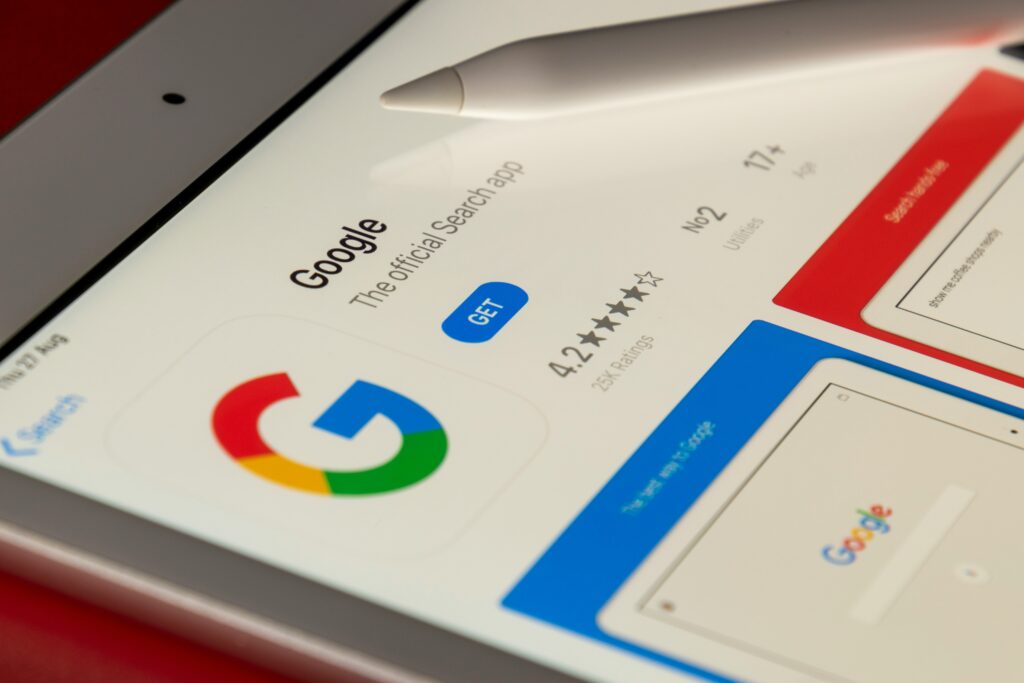Why Media Presence Still Matters
Here’s the truth: if people can’t see you, they can’t trust you. Visibility isn’t a vanity metric anymore—it’s the entry fee to credibility. Whether you’re a solo creator, startup founder, or global brand, media presence is how the world decides if you’re serious or just shouting into the void.
Traditional PR—the polished press release, the staged event, the gatekeeper-run landscape—is losing its grip. It’s not dead, but it’s definitely not driving the conversation. Digital media is where your audience lives. That means your blog post, your TikTok clip, your podcast cameo—that’s your press kit now.
The catch? Everyone else is doing the same thing. There’s no shortage of voices, but there is a shortage of clarity. Standing out isn’t about being the loudest. It’s about owning a point of view and delivering it with consistency. If you don’t control your narrative, don’t be surprised when someone else writes it for you.
Strategy 1: Build a Spotless Content Core
One-off viral hits might spike your numbers, but they don’t build a brand. Consistency does. In a digital landscape that never stops moving, having a clear, stable voice cuts through the chaos. That’s where cornerstone content comes in. These are the posts, videos, or resources that pin down your values, your expertise, and your tone. They introduce you to new audiences and reinforce your message with existing ones.
Think of it as long-term equity. Your blog series on industry myths, that signature explainer video, or a hard-won case study—those aren’t just posts. They’re assets, and they keep working while you sleep.
The content that commands respect today is clear, useful, and intentional. Educational deep-dives, behind-the-scenes processes, or thought leadership with a point of view—they all return more than trendy reaction clips. Audiences are getting sharper. They want more than noise.
For a bigger picture on how smart content builds serious digital leverage, check out The Power of Content Marketing in Digital Media.
Strategy 2: Get Smart with Social Proof
Social proof isn’t just nice to have—it’s a shortcut to trust. In a digital landscape full of noise, third-party validation cuts through faster than self-promotion ever could. Testimonials, product reviews, and client success stories carry real weight, especially when they’re specific and verifiable. Press features? Still valuable, especially when placed in respected niche outlets. They lend instant credibility and signal legitimacy to new audiences.
Case studies are your secret weapon. Not only do they tell a story, they show results. If you’re a brand or individual trying to make waves, showing exactly how you’ve helped others builds trust and positions you as a doer—not just a talker.
And when it comes to influencer partnerships, bigger isn’t always better. The smartest brands aren’t chasing follower counts—they’re looking for the right fit. Relevance matters more than reach. Micro-influencers with deep audience alignment often drive way more meaningful engagement than fleeting shoutouts from mega accounts. Think shared values, native-style content, and long-term collaboration over one-off mentions.
Strategy 3: Align with the Right Platforms
In an age of constant noise and overflowing platforms, spraying your content everywhere is no longer effective. Success comes from strategic placement—meeting your audience on the platforms they actually use and trust.
Go Where Your Audience Is
Many brands make the mistake of prioritizing platform popularity over audience relevance.
Ask yourself:
- Where does my target audience spend their time online?
- What type of content do they consume there?
- What are their behaviors and expectations per platform?
It’s better to master two or three platforms than to underperform on six.
Understanding Platform Roles
Each social platform has its own strengths. Knowing these can help you craft content that lands:
- LinkedIn: B2B messaging, thought leadership, employer branding
- YouTube: Deep engagement, long-form video, high search value
- TikTok: Quick storytelling, trend-driven content, brand humanization
- Twitter (X): Real-time conversation, commentary, and short-form updates
Use these platforms for their strengths—not as duplicates of one another.
Native Content vs. Cross-Posting
Copy-pasting content across platforms weakens its impact. Instead, tailor your message to fit each format:
- Platform-native content: Custom visuals, tone, and structure that match what users expect
- Cross-posted content: Quick shares that may work for announcements or evergreen info, but often miss the mark on engagement
Pro tip: Start with one piece of content and reshape it for each platform’s language. A polished insight can be a tweet, a short on YouTube, and a conversation starter on LinkedIn—each tailored, not identical.
Strategy 4: Use Real-Time Content to Stay Relevant
Speed now trumps perfection. In a media landscape that shifts daily—sometimes hourly—being first is often more valuable than being flawless. Audiences want relevance. They want to see your take on a trending topic while it’s still hot, not two weeks into the news cycle. That means showing up quickly, even if the lighting isn’t perfect or the language isn’t polished. Get the idea out before the moment passes.
But jumping on trends doesn’t mean losing your tone. Reactive content works best when it amplifies your voice, not replaces it. The key is to interpret the moment through your brand lens. If you’re known for humor, find a witty angle. If you’re all about insights, offer a sharp analysis. Stay on-brand, just operate in real-time.
Some brands are already doing this well. Duolingo on TikTok embraces chaotic humor to comment on internet culture—aligning perfectly with their quirky personality. NBA teams post behind-the-scenes player reactions within minutes of buzzer-beaters. Even B2B companies like Notion jump in with timely memes and tool breakdowns right when buzz hits.
The rule? Be fast, stay real. Your timing builds relevance. Your voice builds loyalty.
Strategy 5: Optimize Distribution, Not Just Creation
Creating high-quality content is just the starting line. Without smart distribution, even your best work risks going unnoticed. In 2024, it’s not just about what you say—it’s about how and where you make sure people hear it.
Why Good Content Fails Without Reach
Plenty of content underperforms, not because it lacks quality, but because it lacks exposure. Distribution is the engine behind discoverability. Channel strategy matters just as much as content strategy.
Common pitfalls:
- Hitting “publish” and hoping it goes viral
- Only using one platform to promote content
- Ignoring owned distribution options like email
Core Distribution Channels That Work
Make your content work harder with a deliberate push across multiple touchpoints:
- Email Marketing — Still one of the highest-converting channels. Feature content in newsletters or drip campaigns.
- Syndication — Republish blog posts or videos on platforms like Medium, LinkedIn Articles, or partner blogs.
- Co-Marketing — Collaborate with aligned brands or partners to expose your content to their audiences.
- Paid Placements — Boost visibility through sponsored posts, native ads, or influencer shout-outs. Targeted spend can make the difference.
Repurpose with Intent
Extend the value of your core content by reshaping it for different formats and channels.
From one asset, create many:
- Turn a blog post into a LinkedIn carousel, a Twitter thread, and a short-form video clip
- Slice a podcast episode into audiograms or quote graphics
- Summarize long-form content into email-friendly executive briefs
Distribution isn’t about dumping content everywhere—it’s about placing your best material in the right hands, at the right time, in the right format.
Closing the Loop: Measure and Adapt
Tracking performance isn’t just about counting likes or views—it’s about understanding what truly builds awareness, trust, and long-term authority.
Know What to Measure
To refine your strategy, focus on metrics that directly align with your goals:
- Impressions measure visibility: Are people seeing your content?
- Engagement measures connection: Are they interacting with it?
- Conversions measure effectiveness: Are they taking action—from clicks to purchases?
Avoid getting stuck on vanity metrics. A smaller audience that engages and converts is more valuable than chasing inflated numbers with no impact.
Key Performance Signals
Start by identifying what good performance looks like for you:
- Growing email list or subscribers
- Consistent engagement from the right audience
- Media mentions or press pickups from your content
- Increased branded search traffic
These signals show that trust and credibility are growing—not just fleeting visibility.
Stay Agile: Test, Learn, Revise
Digital media shifts quickly. That viral format from six months ago? It might not hit today. That’s why iteration is non-negotiable.
- Run small A/B tests on headlines, formats, and platforms
- Revisit analytics monthly—not annually
- Be willing to shift budget or focus from lagging channels
Those who adapt fastest—not just the loudest voices—are the ones that break through and stay relevant.
Wrap-Up: Presence with Intention
Creating a visible media presence doesn’t mean being on every platform or chasing every trend. Instead, it’s about strategic presence—being where it matters, in a way that reinforces your brand and builds lasting trust.
Purpose Over Popularity
Not every opportunity is the right one. Focus your energy where you can consistently provide value and connect with your target audience.
- Choose platforms that align with your goals
- Avoid spreading yourself too thin across every channel
- Prioritize depth of engagement over surface-level reach
The Formula for Meaningful Presence
Winning in digital media comes down to three key commitments:
- Build trust: Show up with transparency, consistency, and professionalism in every touchpoint.
- Deliver value: Share insights your audience can’t get elsewhere—educate, inform, entertain, or inspire.
- Stay consistent: Momentum takes time. Posting regularly with intention is more powerful than sporadic spikes of activity.
Long-Term Visibility, Not Just Viral Moments
Being intentional with your media presence leads to steady growth, stronger reputation, and a more loyal audience. It’s not about chasing attention—it’s about earning it.
The best media strategies are sustainable, strategic, and uniquely yours.




